Valve modification can be defined as: adding value to standard or “commodity” valves by installing actuators, special trims, different end-connections, packing and gaskets, and other accessories or upgrades not provided on the original product. These modifications are primarily for gate, globe, check and ball valves.
Back in the days of black and white television and cars with tailfins, end users usually had a storehouse full of valves commonly used in their plants. This was ideal for both the valve OEM and the distributor: Everything was ordered in advance and the need for expedited-delivery, special valves was a random occurrence. However, belt-tightening measures by those end users lowered their inventories. Combined with the refinery and petrochemical construction boom of the 1970s, this created a situation where the supply capability of domestic manufacturers was exceeded for commodity and particularly for specialized valves.
MODIFICATION BECOMES POPULAR
Up until this time, modification of new valves by third-party shops was only tacitly approved by a few OEMs. However, they soon began to see the advantages of authorizing quality valve service facilities to perform alterations on their products. With an official authorization program, the OEM could retain oversight of the aftermarket work performed on their products, plus reduce the number of bogus operations performed on their valves.
This led to a system whereby individual manufacturers audited the facilities performing the modification work and only authorized those companies with the capabilities and quality systems to perform the work correctly.
Today, the OEM authorization system for gate, globe, check and ball valve modification is very strong, and widely used and accepted by OEMs, distributors and end users. However, modification of pressure relief valves almost exclusively consists of OEM parts replacement by an OEM and a National Board-certified facility. The modification of control valves is usually handled by an OEM’s own service centers.
MSS MODIFICATION STANDARDS
The Manufacturers Standardization Society (MSS) has accomplished a valuable service for the new valve modification industry by creating a series of standard practices detailing how many popular valve modifications should be performed. The first MSS valve modification document, MSS SP-141, Multi-turn and Check Valve Modifications, was published in 2011. Here is the scope of that document:
1.1 This Standard Practice establishes minimum requirements for the modification of new gate, globe and check valves, which have been manufactured in accordance with recognized national standards and require modification to meet specific end-user requirements.
1.2 The purpose of this Standard Practice is to ensure that the quality of workmanship and materials meet all applicable standards and codes.
SP-141 contains basic instructions, welding criteria and non-destructive testing requirements for many modifications, including trim changes, changing ends from raised-face to butt-weld ends, packing and gasket replacement, bypass installation and NACE International, MR01-03 compliance. The document also calls for OEM parts to be used if readily available.
The following is verbiage from one of the nondestructive evaluation procedures contained in SP-141: dye penetrant (PT) examination.
10.2 Dye Penetrant Examination of Valve Body and Bonnet
10.2.1 Scope—The procedure details the requirements for dye penetrant (PT) examination of bodies and bonnets of assembled valves, as per MSS SP-93 or ASME [American Society of Mechanical Engineers] B16.34. This procedure requires the replacement of the original packing and gasket.
10.2.2 Valves shall be disassembled in accordance with Sections 4.1 and 4.2.
10.2.3 All paint is removed from valve body and bonnet, either by abrasive means (grit or shot blast) or with chemical paint stripper.
10.2.4 All exterior areas as well as accessible interior areas of the body and bonnet are to be examined.
10.2.5 PT inspection is to be performed by personnel certified to Level II, in accordance with ASNT [American Society For Nondestructive Testing] SNT-TC-1A. Level I personnel may perform the inspection under the guidance of an onsite Level II inspector.
10.2.6 PT inspection shall follow the guidelines of MSS SP-93 or ASME B16.34, Appendix III. Acceptance criteria shall be in accordance with the respective test specification.
While the MSS standards are helpful, it is important to remember that this is new valve modification, which means that the original design standards must be maintained unless superseded by an owner/end user’s specific request for variance. When performing modification work, it is imperative that an inventory of current valve design standards, such as ASME B16.34, American Petroleum Institute (API) 600 or API 594 be maintained. Additionally, a modifier is responsible for any necessary design calculations, such as those needed for substituting a stronger stem material for a weaker material (e.g., 410ss to 316ss). Bonnet extensions for cryogenic applications or extension tubes for buried pipeline service also require competent design work.
OEM SUPPORT IS VITAL
Modification shops are a valuable source of valve quality feedback to the OEM. On the floor of a typical shop, thousands of valves are tested and inspected each year. These secondary inspections can provide valuable data to the OEM if non-conformances are found.
The valve shop also serves as a second “final inspection point” for OEM products. Defects have been discovered by modification facilities that could have had dire consequences for the manufacturer had they failed in service.
THE WARRANTY
Although some manufacturers have set up service centers to repair and modify their products, the majority of valve modification work is still performed by independent valve modification shops. These independent shops usually have an edge in service and order turnaround because they are not encumbered by a large OEM bureaucracy that rightly prefers mass production of new valves over specialized valves.
Valve modification facilities provide an important service to end users, distributors and OEMs. The OEM benefits by being able to concentrate on high production items, rather than late-ordered specials that often slow assembly lines down. The distributor benefits by spending less money stocking slow-moving special valves. The end user benefits by receiving critical, special valves on time and at a reasonable price, which lowers total cost of ownership.
GREG JOHNSON is president of United Valve (www.unitedvalve.com) in Houston. He is a contributing editor to VALVE Magazine, a past chairman of the Valve Repair Council and a current VRC board member. He also serves as chairman of the VMA Communications Committee, is a founding member of the VMA Education & Training Committee and is past president of the Manufacturers Standardization Society. Reach him at greg1950@unitedvalve.com.
RELATED CONTENT
-
Standards for Actuator/Gearbox Flanges
“Many variations in valve and actuator dimensions and characteristics have come into play especially now that we have worldwide vendors,” said Paul Souza, training manager at AUMA Actuators in a presentation at the Valve Manufacturers Association Virtual Valve Forum in November 2020.
-
Actuator Issues? Use This Checklist!
While there may be 40 reasons valve actuators may stop working, there really is only a handful of components that can cause the problems. So, if you have an actuator on the fritz, here are the five things you need to check.
-
Electric Actuators in the Oil and Gas Industry
Actuators in the oil and gas industry operate many types of valves, and they must do so with great precision and accuracy.





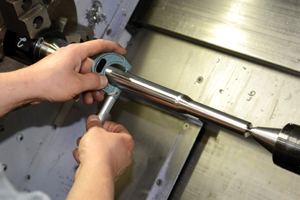
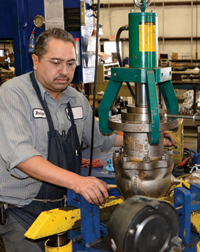
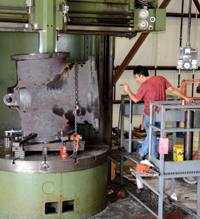
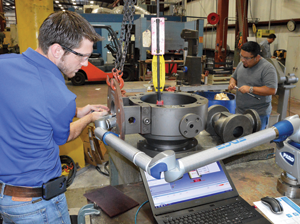
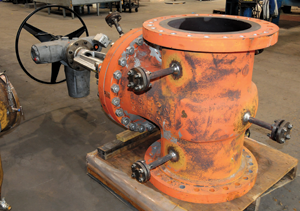



 Unloading large gate valve.jpg;maxWidth=214)

